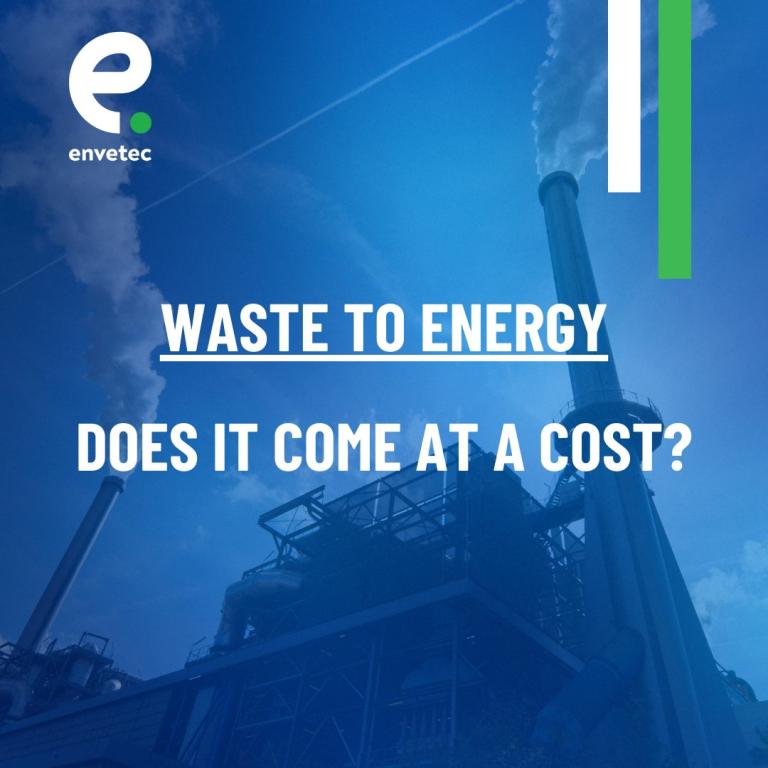Envetec Insight
Why Waste to Energy Isn’t A Silver Bullet for Waste Recycling
In the ongoing battle against plastic pollution and ever-increasing waste volumes, Waste to Energy (W2E) technologies have emerged as a seemingly attractive option. The concept of converting waste into usable energy sounds ideal: reducing landfill burdens while simultaneously generating electricity or heat. However, a closer examination reveals that W2E is not a universal solution and, in some instances, may exacerbate existing problems. While W2E can be a cleaner alternative to landfilling in specific situations and even generate local power, it’s crucial not to view it as a sustainable endpoint for the plastic crisis. This risks overshadowing critical environmental trade-offs.

The Environmental Impact of Waste Treatment: From Landfill to Atmosphere
Yobel Novian Putra, an advocate with the Global Alliance for Incinerator Alternatives, aptly describes burning waste as “just moving the landfill from the ground to the sky.” This powerful image highlights a fundamental flaw: incineration may reduce visible waste, but it doesn’t eliminate it. Instead, it transforms waste into by-products, including greenhouse gases, pollutants, and bottom ash, all of which can pose health risks and contribute to climate change. Even the most advanced W2E systems produce significant amounts of CO2, and many still release harmful by-products like dioxins and particulate matter. Burning plastic, a fossil fuel-derived material, emits roughly the same amount of carbon as if it were used directly as fuel. This is a key consideration for effective waste treatment strategies.
The Cement Industry and Biohazardous Waste: A Case Study
A 2021 Reuters investigation revealed how the cement industry, a major carbon emitter, is increasingly using plastic waste from industries including as healthcare and life science as a fuel source. This move is often presented as a cost-saving measure and a way to reduce reliance on coal. However, the environmental implications are more complex. While burning plastic in cement kilns may reduce coal consumption, it merely substitutes one carbon-heavy fuel for another. Furthermore, this process can incentivise the continued production of single-use plastics by creating a downstream demand for plastic as fuel. This creates a counterproductive cycle where plastic waste is not reduced or avoided but rather encouraged, undermining efforts to transition to a genuine circular economy. This is especially concerning when considering the potential for biohazardous waste streams entering this process.
Energy Recovery vs. Resource Recovery: The Role of Clinical Waste Collection
W2E often competes with recycling for the same resources. In areas where recycling systems are underdeveloped or contaminated waste makes sorting difficult, W2E may appear to be an efficient alternative. However, this diverts attention and investment away from higher-value solutions like reuse and true material recovery. Burning plastics or other high-energy-content waste items may generate electricity, but it permanently destroys materials that could otherwise be recycled. This locks us into a linear “extract, use, burn” model instead of building the circular systems that many industries and regulatory bodies are now advocating for. Efficient clinical waste collection and segregation are crucial to ensure that valuable resources are not unnecessarily incinerated.

W2E: A Tool, Not the Ultimate Solution for Biohazardous Waste
There’s no denying that W2E can play a role, particularly in managing residual waste that cannot be recycled or safely landfilled. However, its role should be clearly defined, limited, and never used as a justification for continuing high levels of single-use plastic production. Treating W2E as a fully sustainable solution obscures the need for more meaningful change: designing waste out of the system, investing in scalable recycling infrastructure, and embracing alternatives that treat waste as a resource, not fuel. This is particularly important when dealing with biohazardous waste, where proper handling and disposal are paramount.
Previous article
Next article